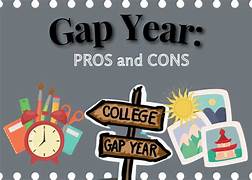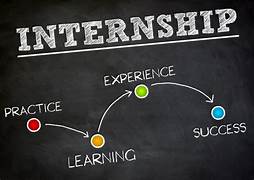What Students Should Know Before Taking Out Student Loans
Introduction
Student loans can be a lifeline for many students seeking higher education, enabling them to access college or university programs that may otherwise be out of reach due to financial constraints. However, while student loans provide immediate financial relief, they also come with long-term implications that should not be overlooked. Before taking out student loans, it’s important to understand how they work, the responsibilities that come with borrowing, and the impact they can have on your financial future.
In this article, we’ll break down everything you need to know before taking out a student loan. From types of loans available to how to manage repayments, we’ll help you navigate the process and make informed decisions. Understanding these key points can help you borrow responsibly and set yourself up for financial success after graduation.
1. Types of Student Loans
Federal Student Loans
Federal student loans are typically the best option for students, as they often come with lower interest rates and more flexible repayment options. The U.S. Department of Education offers several types of federal loans, including Direct Subsidized Loans, Direct Unsubsidized Loans, and Direct PLUS Loans. Subsidized loans are particularly beneficial as they don’t accrue interest while you’re in school.
Private Student Loans
Private student loans are offered by banks, credit unions, and other financial institutions. They can be a good option when federal loans don’t cover all your expenses. However, private loans typically have higher interest rates and fewer repayment options than federal loans. They may also require a credit check and a co-signer, especially if you don’t have an established credit history.
Understanding Interest Rates
Both federal and private loans come with interest rates, but these rates vary significantly. Federal loans have fixed interest rates that are usually lower than those of private loans. It’s important to understand how the interest rate is applied and how it will affect the total amount you repay over the life of the loan.
2. Loan Limits and Eligibility
How Much Can You Borrow?
For federal loans, there are limits on how much you can borrow each year, based on your year in school and whether you’re a dependent or independent student. These limits vary, so it’s crucial to understand how much you can borrow and to only borrow what you need.
Private loans, on the other hand, may allow you to borrow up to the full cost of your education (including tuition, books, living expenses, etc.), but they come with stricter eligibility criteria and higher interest rates.
Eligibility Criteria for Loans
Eligibility for federal student loans is based on factors like your financial need, whether you’re enrolled at least half-time in an eligible program, and your academic standing. Private lenders may have different criteria, such as credit scores and income levels. It’s important to research and understand what makes you eligible for both federal and private loans.
3. The Importance of Borrowing Responsibly
Only Borrow What You Need
It can be tempting to borrow the maximum amount available, but doing so may lead to taking on more debt than necessary. Borrow only what you need to cover your tuition, fees, and living expenses, and look for ways to reduce costs through scholarships, grants, or part-time work.
Long-Term Financial Impact
Remember that loans need to be repaid with interest, which means that even if you don’t immediately feel the financial burden, it will be there after graduation. The more you borrow, the more you’ll have to repay in the future, so think carefully about how much debt is manageable for your post-graduation life.
4. Understanding Repayment Terms and Options
Repayment Start Date
With federal loans, you don’t have to start repaying until after graduation or if you drop below half-time enrollment. However, interest will continue to accrue, even if you’re not making payments. Private loans may have different terms, and some may require payments while you’re still in school. It’s important to understand when your payments will begin and plan accordingly.
Repayment Plans
Federal student loans offer a variety of repayment plans, including Income-Driven Repayment plans, which adjust your monthly payments based on your income. Some plans even offer loan forgiveness after a set number of years. Private loans generally offer fewer repayment options, and terms can be stricter. It’s crucial to research and select the repayment plan that works best for your future financial situation.
Interest Accumulation During School
For unsubsidized federal loans and private loans, interest will accumulate while you’re in school, increasing the total amount you owe. Even though you may not have to make payments during school, the longer you wait to repay the loan, the more you’ll owe due to interest.
5. The Impact of Student Loans on Your Credit Score
Student Loans and Credit
Taking out a student loan can impact your credit score, as loans are reported to credit bureaus. Responsible management, such as making payments on time, can help you build a good credit history, which will benefit you in other areas, such as getting a car loan or mortgage in the future. However, missing payments can negatively affect your credit score, so it’s essential to stay on top of your loan obligations.
Defaulting on Student Loans
If you default on your student loans (typically by failing to make payments for 270 days or more), it can have serious consequences. It can lead to wage garnishment, tax refund interception, and a damaged credit score. It’s crucial to keep up with payments, or contact your loan servicer if you’re struggling.
6. Loan Forgiveness and Discharge Programs
Public Service Loan Forgiveness (PSLF)
Federal student loans may be eligible for forgiveness through the Public Service Loan Forgiveness (PSLF) program if you work in a qualifying public service job for 10 years. This can be a valuable option if you plan to work for the government or non-profit organisations.
Teacher Loan Forgiveness
Teachers who work in low-income schools may qualify for teacher loan forgiveness. This can result in the forgiveness of up to $17,500 in federal student loan debt after five years of service.
Other Forgiveness Programs
There are other federal loan forgiveness programs available, depending on your career path and the type of work you do. Always research the specific forgiveness programs that might apply to you.
7. Exploring Alternative Funding Options
Scholarships and Grants
Before borrowing, explore all available scholarships and grants. Unlike loans, scholarships and grants don’t need to be repaid. Many organisations, universities, and government programmes offer financial aid that can help cover your educational costs.
Part-Time Jobs and Internships
Consider working part-time or applying for internships while in school. This can help offset living costs and reduce your need to borrow. It also allows you to gain valuable work experience that can help you build your career post-graduation.
8. The Importance of Financial Literacy
Understanding Loan Terms
Before committing to any loan, take the time to fully understand the terms. Review the interest rates, repayment schedules, and any other conditions that may apply. Having a solid understanding of these details will help you make informed decisions and avoid any unpleasant surprises down the road.
Creating a Budget
Create a budget that includes all your living expenses, tuition, and loan repayments. By setting financial goals and staying within your budget, you can manage your debt responsibly and avoid accumulating unnecessary expenses.
Conclusion
Taking out student loans can be a necessary step for many students pursuing higher education, but it’s important to approach borrowing with caution. Understanding the different types of loans, their terms, and your repayment options will help you make smart financial decisions. By borrowing responsibly, exploring all available funding options, and planning for the future, you can minimise the impact of student loans on your financial well-being and set yourself up for long-term success.
FAQs
1. How do I know if I qualify for federal student loans?
Eligibility for federal student loans is based on factors like financial need, enrollment status, and academic progress. Fill out the FAFSA to determine your eligibility.
2. Can I borrow more than the cost of tuition with student loans?
Yes, federal loans allow you to borrow for tuition, books, and living expenses. However, borrowing more than you need can increase your future repayment burden.
3. Can I defer my student loans?
Federal student loans can be deferred under certain circumstances, such as during school enrollment or financial hardship. Private lenders may also offer deferment options, but they vary by lender.
4. What happens if I can’t make my student loan payments?
If you miss payments, you may enter default, which can damage your credit score and lead to wage garnishment. Contact your loan servicer if you’re struggling to make payments.
5. Are there any alternatives to student loans?
Yes, consider scholarships, grants, and part-time work as alternatives to student loans. These options can help reduce your debt burden.
6. How can I pay off my student loans faster?
Consider making extra payments when possible, refinancing your loans, or exploring income-driven repayment plans to pay off your loans faster.
7. Can student loans be forgiven?
Yes, federal student loans may be eligible for forgiveness through programs like Public Service Loan Forgiveness or Teacher Loan Forgiveness, depending on your career path.






